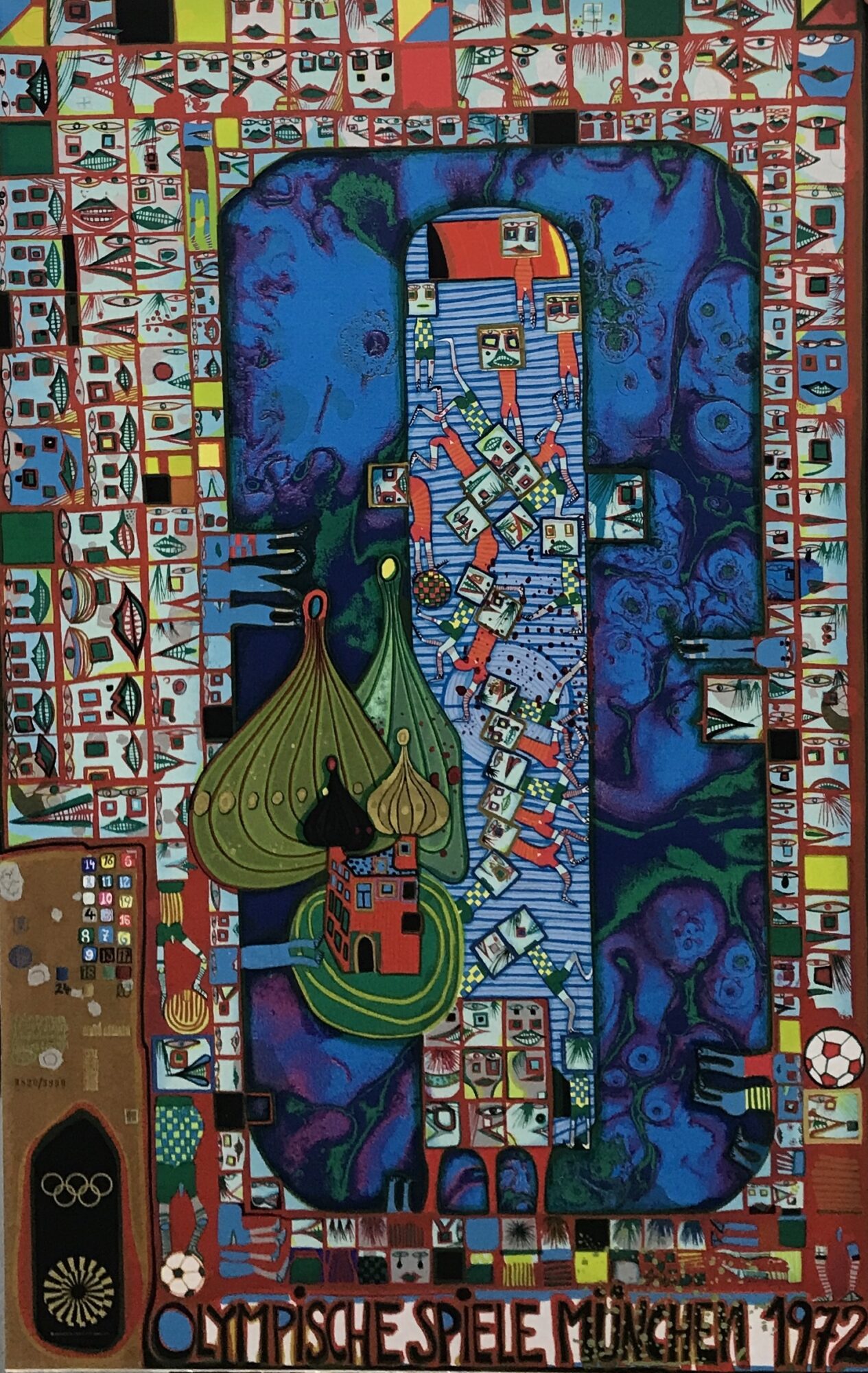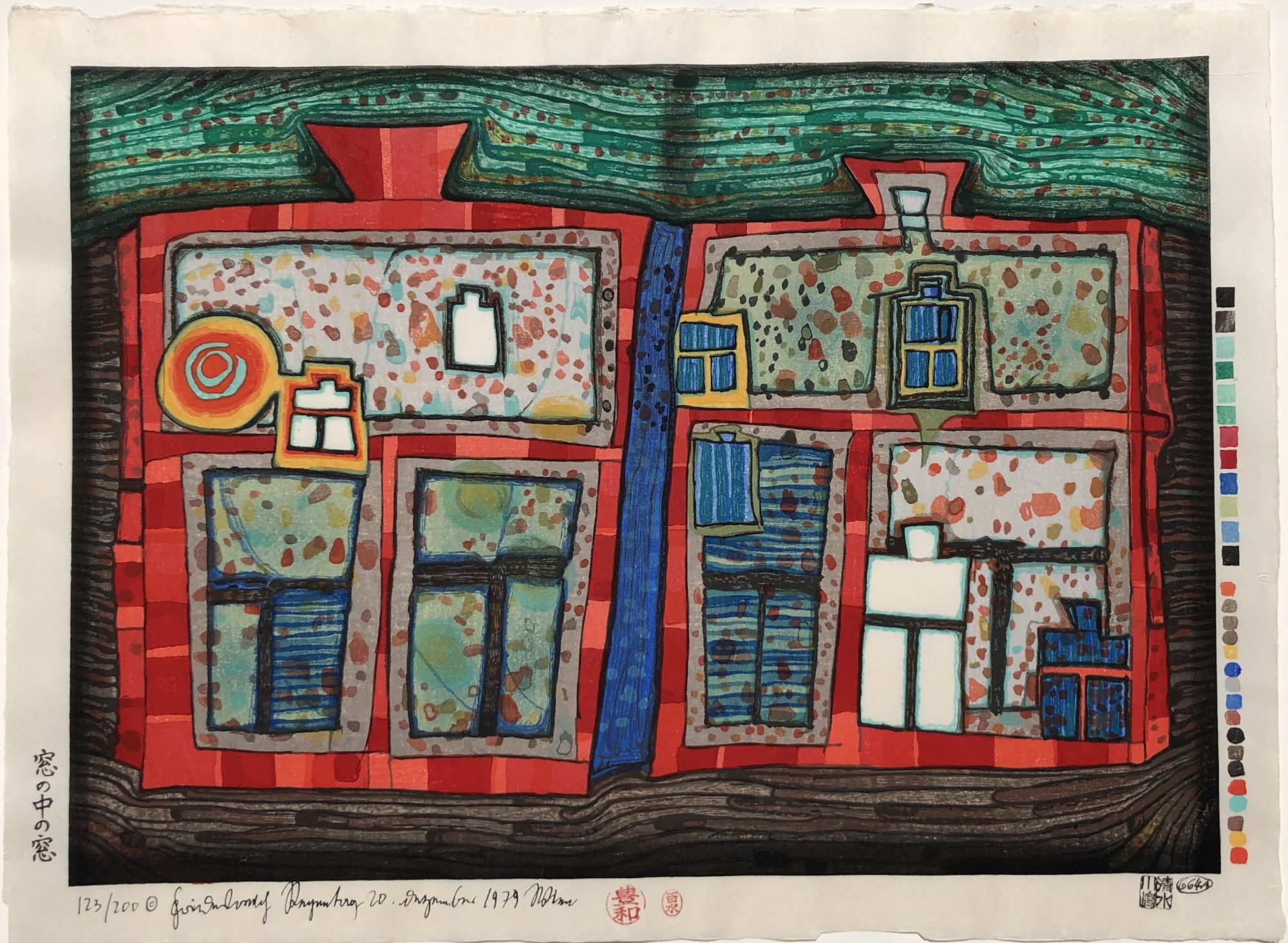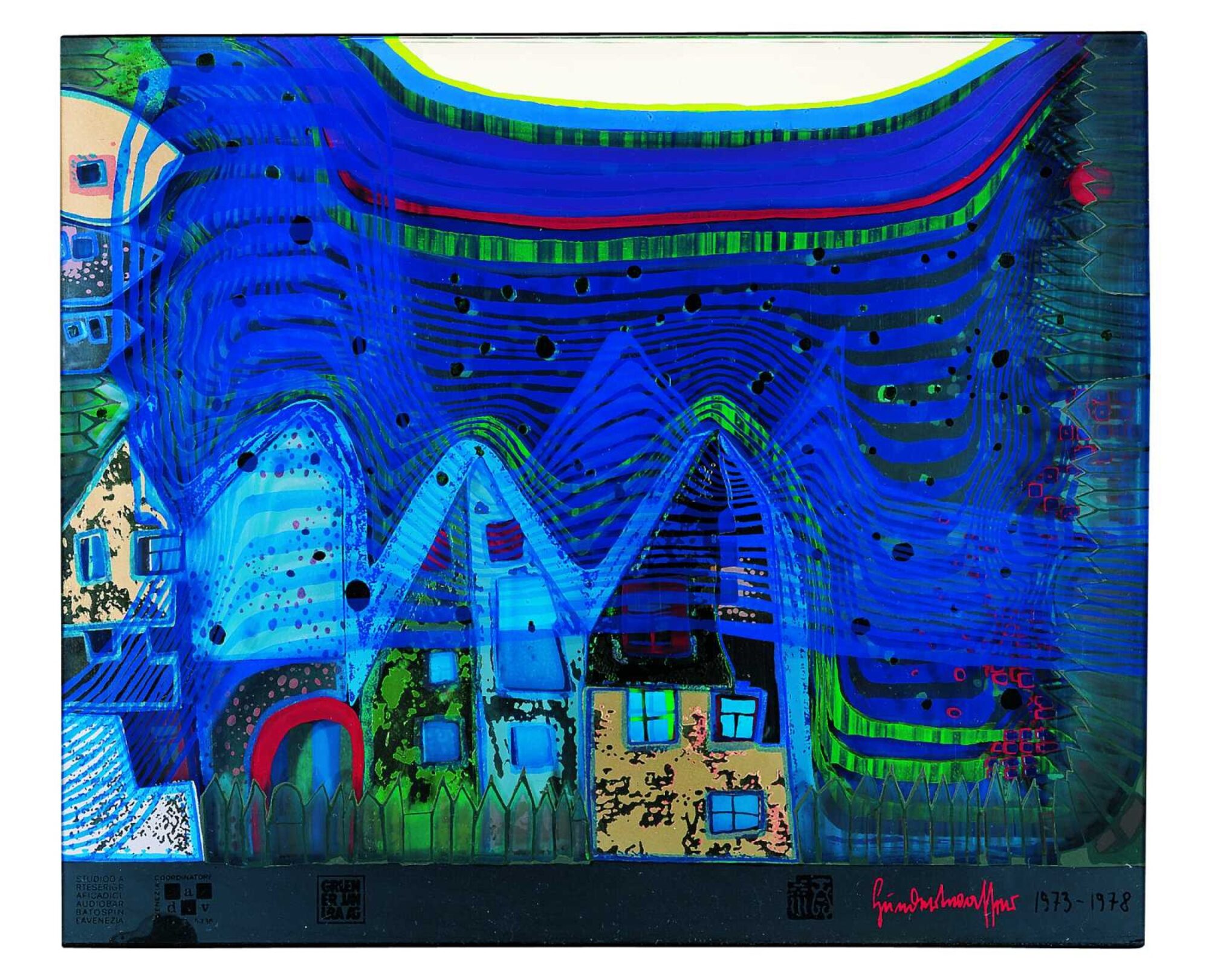Friedensreich Hundertwasser – Song of the Whales
Friedensreich Hundertwasser, Song of the Whales is an original woodcut print in colors on Japon paper. This print is signed, dated and numbered from the edition of 250. There are also annotations and stamps in the margins. Image Size: 20 3/8 x 14 1/2 inches. Published by Gruener Janura, Glarus, Switzerland. K. 77.
Friedrich Stowasser (December 15, 1928 – February 19, 2000), better known by his pseudonym Friedensreich Regentag Dunkelbunt Hundertwasser, was an Austrian-born New Zealand artist and architect who also worked in the field of environmental protection.
Hundertwasser stood out as an opponent of “a straight line” and any standardization, expressing this concept in the Song of the Whales. His best known work is the Hundertwasserhaus in Vienna, Austria which has become a notable place of interest in the Austrian capital, characterized by imaginative vitality and uniqueness.
| Title | Song of the Whales |
|---|---|
| Medium | Woodcut |
| Year | 1979 |
| Edition | 250 |
| Catalogue Raisonné | K. 77 |
| Signature | Signed, dated, numbered |
| Size | 22.25 x 16.6 (in) 56.5 x 42 (cm) |
| Price | SOLD |
Description
Friedensreich Hundertwasser, Song of the Whales is an original woodcut print in colors on Japon paper. This print is signed, dated and numbered from the edition of 250. There are also annotations and stamps in the margins. Image Size: 20 3/8 x 14 1/2 inches. Published by Gruener Janura, Glarus, Switzerland. K. 77.
Friedrich Stowasser (December 15, 1928 – February 19, 2000), better known by his pseudonym Friedensreich Regentag Dunkelbunt Hundertwasser, was an Austrian-born New Zealand artist and architect who also worked in the field of environmental protection.
Hundertwasser stood out as an opponent of “a straight line” and any standardization, expressing this concept in the Song of the Whales. His best known work is the Hundertwasserhaus in Vienna, Austria which has become a notable place of interest in the Austrian capital, characterized by imaginative vitality and uniqueness.
Austrian artist and designer whose passion for spirals and arabesque lines was largely inspired by Viennese Secessionists like Gustav Klimt. “Today we live in a chaos of straight lines, in a jungle of straight lines,” he critiqued of the man-made world. “If you do not believe this, take the trouble to count the straight lines which surround you. Then you will understand, for you will never finish counting.” Born Friedensreich Stowasser on December 15, 1928 in Vienna, Austria, he and his mother barely avoided persecution from the Nazi regime during World War II. After the war, the artist briefly enrolled in the Vienna Academy of Art before dropping out to travel extensively throughout Europe and Asia. As a designer in the 1950s, he undertook several large-scale architectural projects, including his famed Hundertwasserhaus. In the early 1970s, Hundertwasser purchased a number of properties in New Zealand where he would live out the remainder of his career. An outspoken activist against nuclear technology and pollution, the artist continued his involvement through the following decades. Hundertwasser died while aboard the Queen Elizabeth II on its voyage from New Zealand to Europe on February 19, 2000. Today, his works are held in the collections of The Museum of Modern Art in New York, the Art Institute of Chicago, the Peggy Guggenheim Collection in Venice, and the National Gallery of Art in Washington, D.C., among others.
Friedensreich Hundertwasser, Song of the Whales
Additional information
| Title | Song of the Whales |
|---|---|
| Medium | Woodcut |
| Year | 1979 |
| Edition | 250 |
| Catalogue Raisonné | K. 77 |
| Signature | Signed, dated, numbered |
| Size | 22.25 x 16.6 (in) 56.5 x 42 (cm) |
| Price | SOLD |





